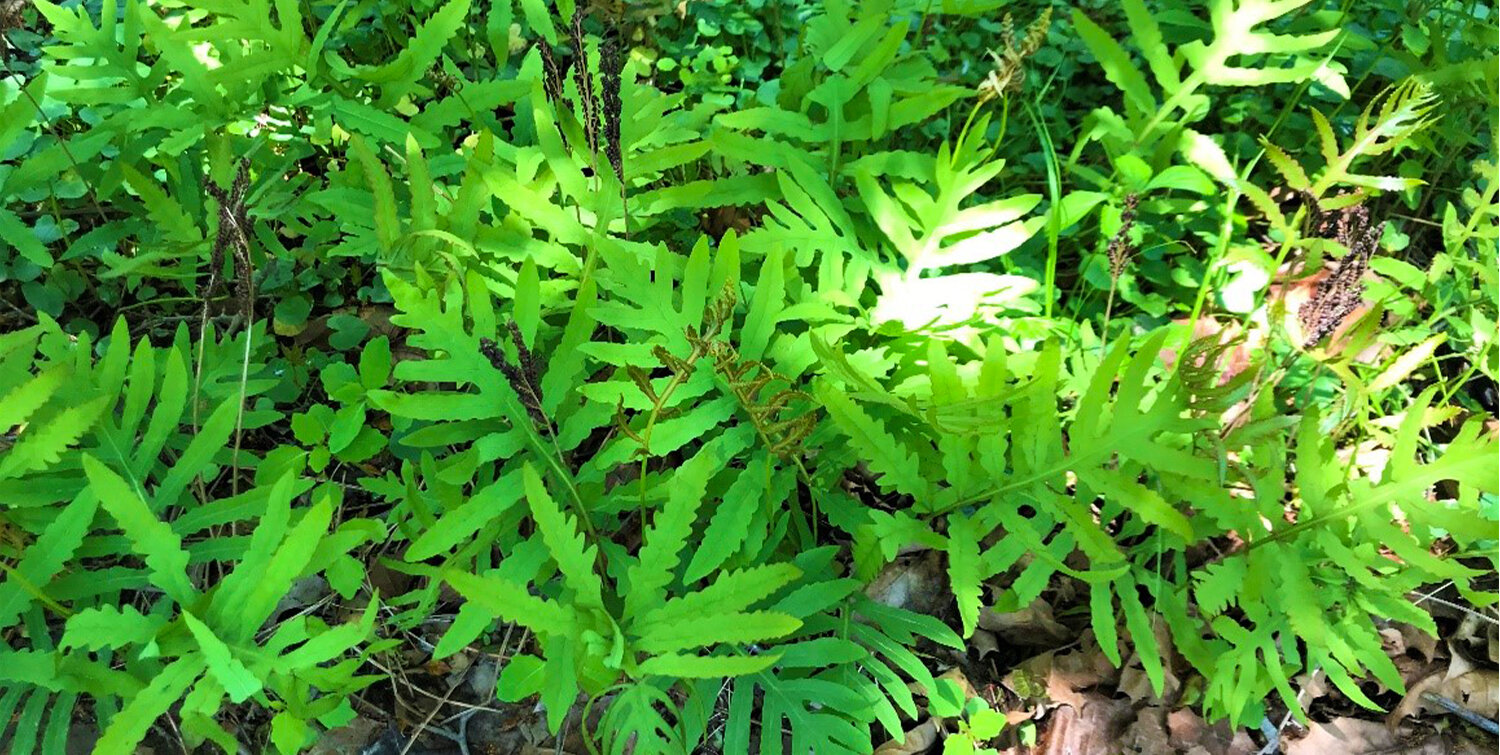Ferns: Prehistoric Plants
FERNS: PREHISTORIC PLANTS
Written by Kristine Manganelli (Somerset County 4-H Coordinator)
Sensitive Ferns
As we move deeper into the Spring season, it is interesting to observe the many cycles and trends that take place every year. The last blog post featured our first blooms of the season, Spring Ephemerals. Since then, leaves have stretched out from their buds on the trees, blocking sunlight from the forest floor. As those tiny wildflowers fade away, the next step in the cycle begins. When May rolls in, one of my favorite plants begins to rise from the ground—ferns.
Ferns are an ancient lineage of plants, and one of the oldest groups of plants on Earth. Fossils of ferns have been found all over the world, dating back to the middle Devonian period--383-393 million years ago. Ferns were even food for herbivores (plant-eating) dinosaurs like Stegosaurus and Triceratops!
While ferns originated in the Devonian period, they thrived during the Carboniferous period--299-369 million years ago. During this time, ferns grew in vast swamps, sinking to the bottom when they died. Over millions of years, these ferns became the natural gas and coal we use today. When you drive in a car, remember that fossilized ferns make it possible!
Most of the earliest ferns have gone extinct but the ferns we see today evolved in the last 70 million years. Some fossil records from this time include species such as the Cinnamon Fern and Royal Fern, which can still be found today, right here in New Jersey. It is amazes me that we can interact with nature that existed millions of years ago!
With around 10,500 living species, modern ferns are one of the most diverse species of plants on Earth. They grow in tropic, arctic and temperate climates, and exist on all continents except Antarctica.
They also grow right here, in my yard. Where the grass meets the woodlands, there is a large swath of ferns. When they first emerge, ferns are rolled in a tight coil called a fractal spiral, or fiddlehead—the furled frond (leaf) of young ferns. They get their name as they resemble the head of a fiddle or violin.
Fiddleheads
I’ve since identified the species in my yard as Sensitive Ferns (Onoclea sensibilis). They get their name as the fronds are very sensitive, turning from green to brown with the first fall frost. Can you find any ferns in your yard?
They thrive in shady places and prefer wet areas, so check in those spaces. If you are looking for something to plant in that shady spot of your yard, go with ferns. As a bonus, deer don’t like them and they are native to New Jersey.
It is beneficial to choose native plants because they are adapted to their environment, requiring less maintenance in the form of water, fertilizer and pesticides. Their root systems can help control erosion, water runoff, and flooding. Planting native provides habitat for wildlife, supports pollinators, and a healthy ecosystem. It is also a great way to be a steward for our local environment. Stewardship means to protect and take care of resources. How can you be a steward of nature?
One great way is learning about the Rutgers Environmental Stewards program – a group of volunteers trained in important environmental issues impacting New Jersey. You can learn more about them at https://envirostewards.rutgers.edu/. They are a great program offered through the Rutgers Cooperative Extension!
Native New Jersey Ferns: Can you find any of these in your yard?
Maidenhair Fern
Lady Fern
Silvery Spleenwort
Spinulose Wood Fern
Crested Wood Fern
Evergreen Wood Fern
Marginal Wood Fern
Sensitive Fern
Cinnamon Fern
Interrupted Fern
Royal Fern
Christmas Fern
Bracken Fern
Try to determine the species using a guidebook or download the free app PlantNet. This app uses your own uploaded photos to make accurate plant identifications.
Sources:
American Fern Society: https://www.amerfernsoc.org/
Bowman’s Hill Wildflower Preserve: https://bhwp.org/


